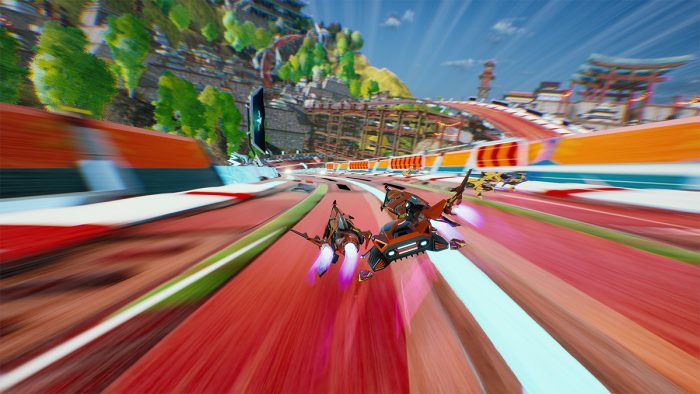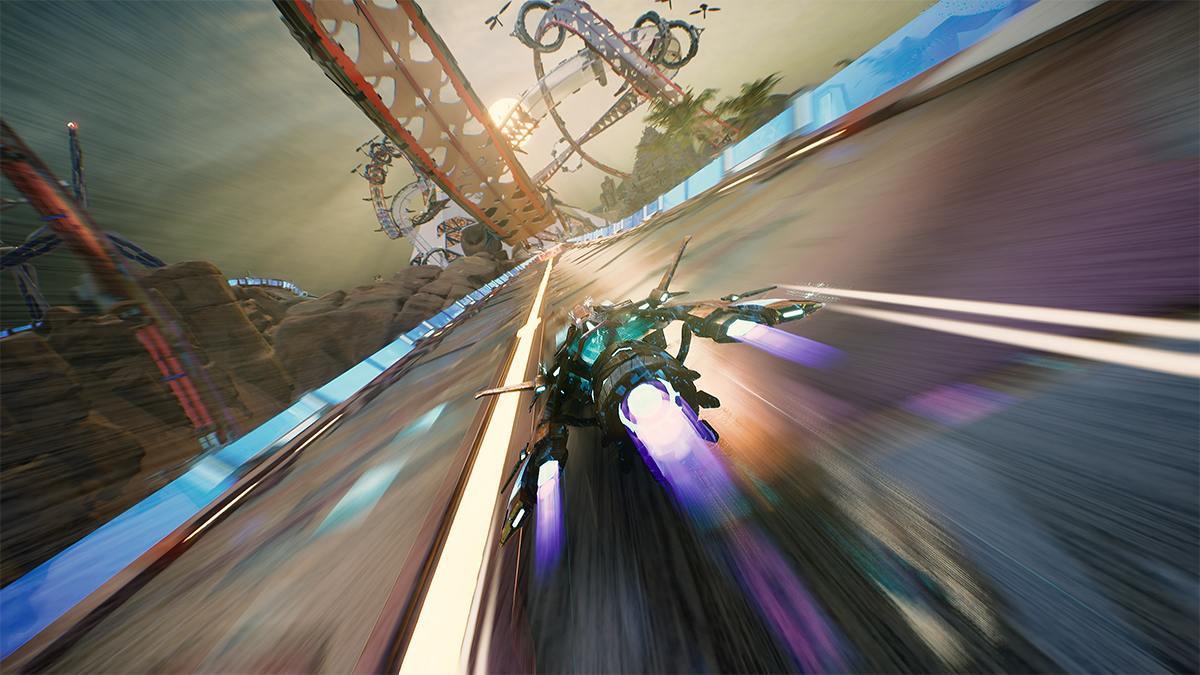High speed and technical realism mix in the upcoming futuristic racer
We’re decades now from any proper new F-Zero or Wipeout games having been released, and while the drought is painful there have fortunately been a few futuristic racers that have picked up the slack. The biggest may be Redout, which focuses heavily on the face-melting speed and track tricks that make the genre so enjoyable. It has its merits as a spiritual successor, checking all of the boxes needed to make a game in the genre.
The plan for Redout 2 is to expand on all of the major points, effectively hitting the accelerator to hyper levels, so to speak, but to really ratchet up the driving aspect of the entire experience.
Our initial hands-on during a recent preview event with the game on Steam was encouraging. Focusing mostly on multiplayer, the three courses we tried (Cairo, Mars, Fuji) all felt incredibly fast and incredibly smooth – the most important aspects of any racing game. Where the original sometimes made us claustrophobic due to its narrow tracks, R2 seems to allow for more lateral movement, especially when in flight with the ability to roll. This adds not only to general maneuvering but also to how we interact with other racers and the course itself.
This is important as the terrain of the new and updated courses affects the races even more. Speed and verticality are front and center, but knowing that certain terrain may allow us to accelerate better or corner easier or slow us down differently is something that evens out the races. Terrain really becomes a part of the gameplay this time around. Racing around a mountain is different than racing on the edge of a black hole, for example.

Perhaps what’s most interesting in Redout 2 is that the developers really want to open up the game and make it more inclusive to new players without rubber-banding the races or modifying the crux of the gameplay. The twin-stick controls of the series are noteworthy for giving more finite adjustments, but for newer players that may take time to master. That’s why the studio has implemented an AI that drives alongside the players, allowing for the delegation of certain commands like pitching or rolling, or it can nudge the player to a specific direction. In our playthrough this doesn’t make it seem like we’re cheating or like the AI is driving the ship; rather, it serves more like the ship droids in Star Wars, helping lift a little of the weight off of our shoulders. I notice the effect in the preview’s later races. Like every game, I initially jump in with full control, ending up in dead last in our heats. But, with slight tuning of the AI I’m able to feel like I belong on the track now, against developers who have spent countless hours tuning and fine-tuning their skills. I’m still not going to win, per se, but I’m competitive now, at least.
The addition keeps the game as fast as possible, but now it opens the experience to players who may not be capable of managing the ins and outs of their ship movements. It’s a much more even playing field now. In the original Redout it’s very easy to fall behind and want to give up, but Redout 2’s goal is to minimize that, or remove that hopelessness completely.
The designs of the tracks themselves are much more detailed than in the original game, in terms of overall environment, ramps, turns, and ways that they can surprise us. In fact, the AI assist actually gives us milliseconds to enjoy the world outside of the track, especially in places like the otherworldly Martian landscape. 34BigThings developed the tracks with the purpose of pushing the limits of the ships. “We wanted to decide what effects were needed to show off, then we built the course around those,” Giuseppe, the Lead Designer, tells us.

As a car nut, Redout 2 manages to pique my interest in a couple of important ways. One, the game’s cars are a part of an F1-like team, where players can build a reputation, design the livery, and get a sense of ownership of a sporting body. The other aspect features those intimate details of the ships’ car-like builds, in which we dive into selecting one of several chassis, tweak the components, and even hear the unique sounds of the engines which, I found as I genuinely geeked out, were based on those of real life cars (Porsches, Lambos) and synthesized to the nth degree.
So, not only am I checking out the detailed backgrounds, drooling over car design and listening to the engine sounds, I have to throw in maintaining my position in a race and planning for the jumps or turns ahead of me. Thank God for the AI assist!
Redout 2 may be set several hundred years in the future, but it’s perhaps made the genre more realistic than ever. I can imagine that technical players will really focus on the details, like regulating a ship’s heat management and hairline course corrections, while sharing the track with less experienced players who just want to race at hyperspeed. Both ends of that racing spectrum are possible, and may even open up the genre to a whole new audience in the process.
Redout 2 launches later in 2022 for PlayStation, Xbox, Switch, Steam, and Epic Games Store.


No Comments